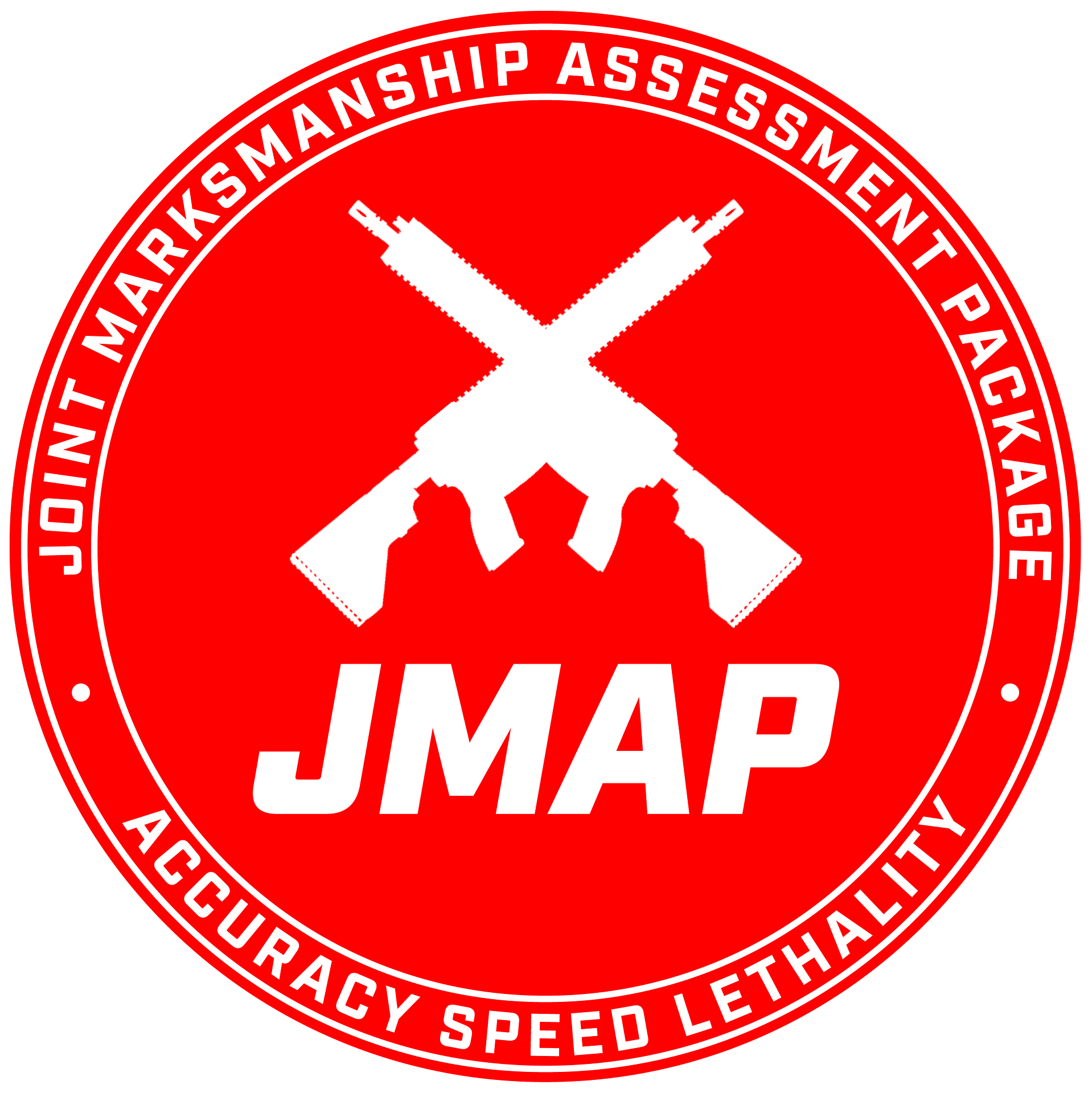Using 3 Bill Drills as a Powerful And Easy Measure of Officer Marksmanship Effectiveness
Abstract:
The “Bill Drill” is a long used marksmanship test where you shoot 6 shots from high ready into an anatomically correct target. Using JMAP and a technique called “monte carlo simulation) we use 3 Bill Drills to build a powerful model (simulation) of officer performance in millions of simulated fights against a typical untrained but very motivated criminal threat (already had gun out, 1 second presentation, .25 splits and 20% hit probability – all changeable up or down).
Key Performance Indicators captured and modeled are:
- Time to Stop Threat
- % of times Officer Stops The Threat
- % of times Officer is a Casualty
- % of shots that are unaccounted between officer and threat
Tests typically take about 2 minutes per shooter, approximately 1 hour for 4 relays of 50 on a reasonably sized square range, or as little as 20 minutes for the same population if using our concurrent shooter Apple Watch shot timing.
This simple test is one of the ones we use for ScoringTech Marksmanship Assessments (STMA) – can we do one for you?
Why the simple Bill Drill?
The priority is to map marksmanship fundamentals into key agent/officer behaviors that lead to stopping threats with less risk to agents and the public. We also need a test that is easy to administer at scale.
This requires marksmanship tests with enough challenge and number of shots so that marksmanship fundamentals such as grip, stance, recoil management, trigger control are tested at a volume and geometric target size challenge where they can break down, and averages and std deviations can be calculated. Example, 3 iterations of a bill drill on a Q20. Or 3 iterations of 5 reload 5 on a Q20.
Currently we use a set of timed set of 3 iterations of 6 shots from the low ready to a Q20 target at 7 yards. Scoring is : Miss = 0, Q/7 = 2.5, 8, 9, 10 = 5 points
Misses penalize time, which has a dramatic effect on student key performance indicators (see below).
Measurement Procedure:
Subjects are read the same description of the test, generally describing time and accuracy as equal. That they have to hit the target fast, and the scoring region values. They are not coached during their performance, and all runs count unless procedure is done wrong or a firearms or range equipment problem occurs.
They are measured, for time, using either AMG Bluetooth shot timers, or our “Recoil” Apple Watch shot timers, both integrated to send timing data to the scoring JMAP App on iPhone/iPad or Android tablets.
They can use 1 Q20 for all 3 to speed up collection or 1 per iteration (3) if your leadership wants more resolution on iteration performance.
Students do iterations until they have 3 done correctly and completely, or are dropped from the measurement via “DNF” in the JMAP software.
Marksmanship Metrics:
JMAP collects and reports these via its interface, and also CSV/Excel output for post analysis.
Avg Hit Factor is points / time
Avg % Points of the total available point from the drill
Avg % Stopping Hits (8 or better)
Avg % Non-Stopping Hits
Time = Avg time of attempts
1st Shot = Avg 1s shot of attempts
Avg Split = Avg time between follow-on shots
Student Key Performance Indicators (SKPIs)
Push these lower for the win. Each of these reward fast and accurate shooting. Misses hurt a lot. Low point hits hurt a lot. Slow 1st shots hurt a lot.
Avg 1st Shot Time
Time to Stop – time to neutralize/stop the threat. This can vary based on the type of threat. Initially 1 stopping hit stops the clock – from either the agent or the bad guy.
Casualty = How many times agent gets a stopping hit before they stop the bad guy
(Bad guy shooting 1 second first shot, .25 splits, and 20% hit (10% non-stop / 10% stop) )
UAR = Un-Accounted Rounds – How many errant shots are sent elsewhere in the fight.
(Agent Misses + Bad Guy Misses during the TTN)
Simulations:
Student(s) vs Bad Guy = fight Bad Guy many (100,000 to 1 million) times using Monte Carlo simulation of the spread of agent (and/or class/group) performance.
SKPIs:
% stops, % UAR
Best would be 100% stops, 0 UAR.
Worst would be 0 neutralizations, 100% of shots were errant.
Rating = %stops – %UAR
100,0 = 100
50,20 = 30
20,30 = -10
Summary
In approximately 2 minutes that it takes to run a shooter thru 3 bill drills + scoring, we’ve learned:
- How many times they will win against a modeled low training high motivation criminal
- How long it took them to stop the threat, on average
- How many rounds were fired by both
- How many of those rounds hit stopping, wounding regions
- How many of those rounds were unaccounted for (misses)
Using acoustic shot timers, and a reasonably sized 50 bay square range we can test 4 relays of 50 in about 1 hour. Using Apple Watch timers for concurrent timing we can do 4 relays of 50 with scoring in about 20 minutes.
If this interests you and your marksmanship team, please contact us. Note that this example uses Bill Drills, but we can easily incorporate virtually any test, as long as they include times per shot and 3 or more iterations of the same drill (for statistical variations needed by the Monte Carlo simulation approach).


Comments are closed